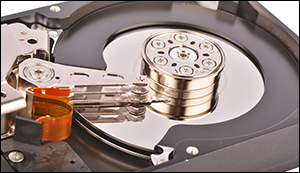A new spintronics material promises huge leaps in computer data storage
11. 5. 2016 | Diamond Light Source | www.diamond.ac.uk
An international team of researchers have been using Diamond Light Source to examine what could be the future of computer storage. The action centres on a new device made from a novel antiferromagnetic material, which holds the promise of ultra-high density data storage.
It uses spintronics rather than electronics to store the data making it resistant to external magnetic fields, and external radiation, and it remains stable when the power is turned off. Furthermore, this all happens at room temperature in a material that is relatively easy to make. This is a combination of features that the data storage industry values very highly.

We have known about and studied antiferromagnetic materials for decades, but they were not thought to have any potential as magnetic storage media. The reason is down to the way their magnetism is aligned on the atomic level. Each atom in a magnetic material has a property called “spin” which can be thought of as a tiny bar magnet, with a north and a south pole.
In ferromagnetic materials, the atomic spins are all lined up in the same direction, which is why they have a measurable magnetic field and act as large scale magnets. The regions in antiferromagnets are, by contrast, arranged head to toe. This means that the spins effectively cancel each other out and they have no external magnetic field.
A normal data bit is stored by using a current to flip the orientation of the spins. This is not possible with antiferromagnetic materials but Dr Peter Wadley and his colleagues have tackled the problem a different way; a spintronic approach that rotates pairs of spins rather than flipping them end over end.
Read more at Diamond Light Source
Image Credit: Adobe Stock
-jk-




